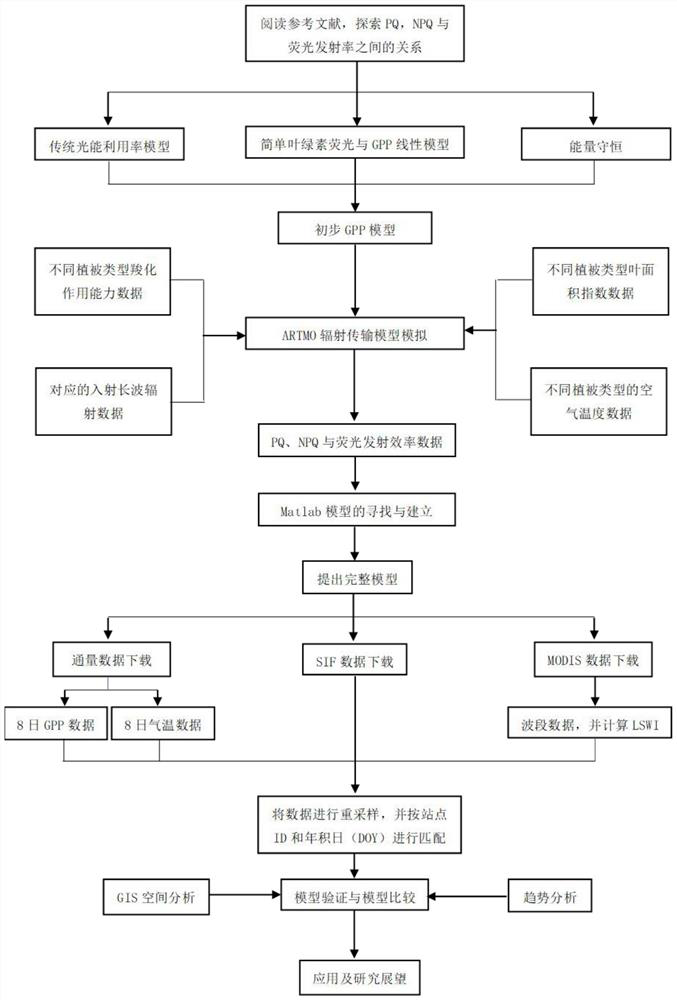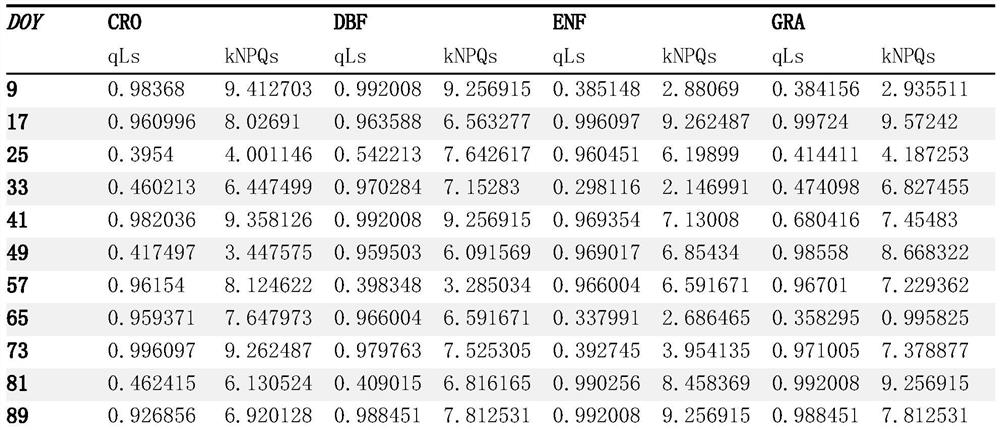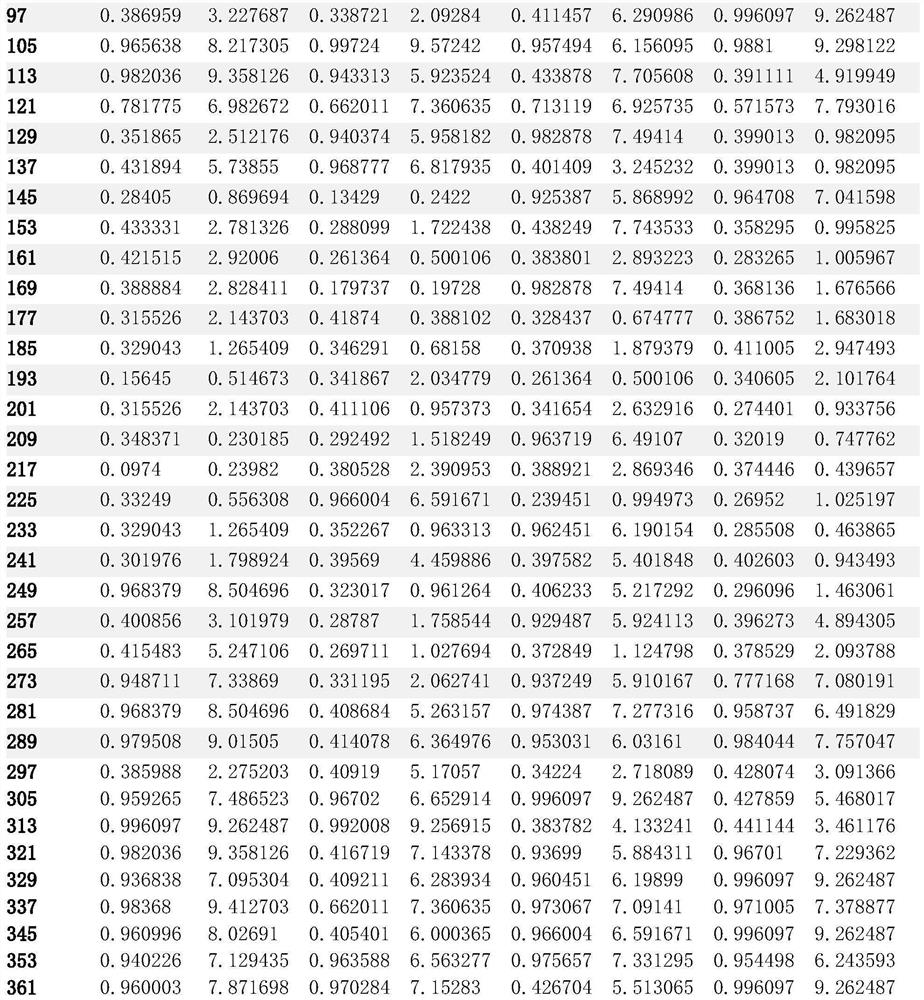Vegetation total primary productivity inversion method and system based on chlorophyll fluorescence
A technology of total primary productivity and chlorophyll fluorescence, applied in chemical information database system, chemical statistics, cheminformatics data warehouse, etc., can solve the problems of limiting greenhouse effect, climate change, time required, and non-uniform carbon emission measurement standards
- Summary
- Abstract
- Description
- Claims
- Application Information
AI Technical Summary
Problems solved by technology
Method used
Image
Examples
Embodiment
[0032] like figure 1 As shown, a method for inversion of total primary productivity of vegetation based on chlorophyll fluorescence is as follows:
[0033] A. Through the inversion of the SCOPE model (or A-SCOPE model), the relationship between the fluorescence emission efficiency LUEf, the opening ratio of the chlorophyll functional reaction center qLs, and the continuous heat dissipation rate kNPQs is obtained, and the function is performed by LUEf=f(qLs, kNPQs) Express;
[0034] Integrating the influence of NPQ value (non-photochemical quenching, English full name non-photochemical quenching, NPQ for short) on the photosynthetic process and fluorescence, the two factors of continuous heat dissipation rate kNPQs and chlorophyll functional reaction center open ratio qLs are used to determine Reflects immediate physiological conditions, where via the following formula:
[0035] where k D is the first-order rate constant related to the internal conversion process, k F is ...
PUM
 Login to View More
Login to View More Abstract
Description
Claims
Application Information
 Login to View More
Login to View More - R&D
- Intellectual Property
- Life Sciences
- Materials
- Tech Scout
- Unparalleled Data Quality
- Higher Quality Content
- 60% Fewer Hallucinations
Browse by: Latest US Patents, China's latest patents, Technical Efficacy Thesaurus, Application Domain, Technology Topic, Popular Technical Reports.
© 2025 PatSnap. All rights reserved.Legal|Privacy policy|Modern Slavery Act Transparency Statement|Sitemap|About US| Contact US: help@patsnap.com



